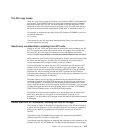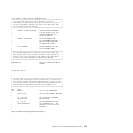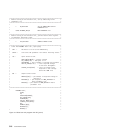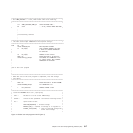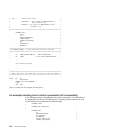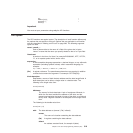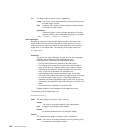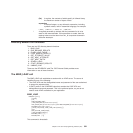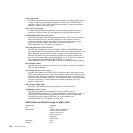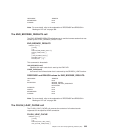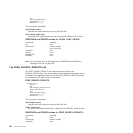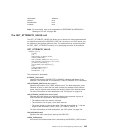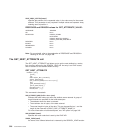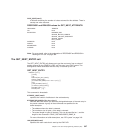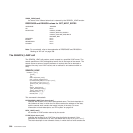
(Rn) A register, the contents of which specify in fullword binary
the maximum number of bytes of data
expression
A decimal integer, or any arithmetic expression, including
symbolic values, valid in assembler language; for example:
L’AREA ; L’AREA+10 ; L’AREA+X’22’ ; SYMB/3+20 .
* A required parameter to indicate that the parameter list is to be
used for the reserved fields. If this parameter is coded, then the
required value must be taken from the _N component returned in
the buffer-descriptor.
Directory domain XPI functions
There are ten XPI directory domain functions.
1. BIND_LDAP
2. END_BROWSE_RESULTS
3. FLUSH_LDAP_CACHE
4. FREE_SEARCH_RESULTS
5. GET_ATTRIBUTE_VALUE
6. GET_NEXT_ATTRIBUTE
7. GET_NEXT_ENTRY
8. SEARCH_LDAP
9. START_BROWSE_RESULTS
10. UNBIND_LDAP
These are the DFHDDAPX calls.The CICS Internet Guide provides more
information on use of these functions.
The BIND_LDAP call
The BIND_LDAP call establishes a session with an LDAP server. The server is
identified by one of the following:
v The LDAP URL and the distinguished name and password of the user authorized
to extract the expected data.
v A RACF profile in the LDAPBIND class that contains the LDAP URL and
distinguished name and password. This is the preferred option, as you do not
need to code LDAP credentials in your application.
BIND_LDAP
DFHDDAPX [CALL],
[CLEAR],
[IN,
FUNCTION(BIND_LDAP),
{LDAP_BIND_PROFILE(block-descriptor)|
LDAP_SERVER_URL((block-descriptor),DISTINGUISHED_NAME((block-descriptor),
PASSWORD(block-descriptor),}
[CACHE_SIZE(name4),CACHE_TIME_LIMIT(name4),]]
[OUT,
LDAP_SESSION_TOKEN(name4),
[LDAP_RESPONSE(name4),]
RESPONSE(name1 | *),
REASON(name1 | *)]
This command is threadsafe.
Chapter 3. The user exit programming interface (XPI) 321



